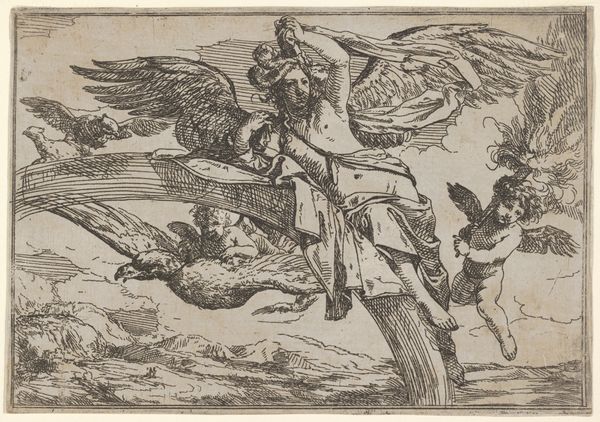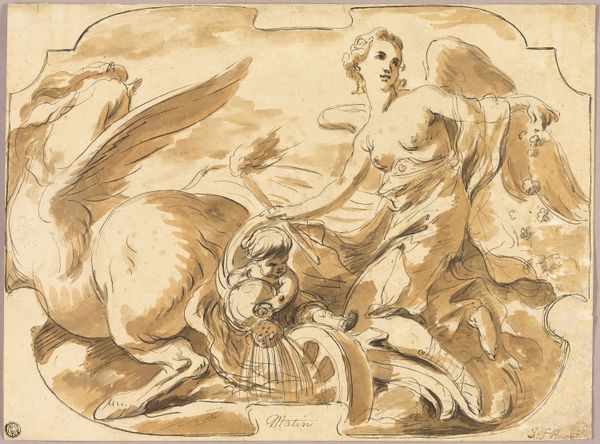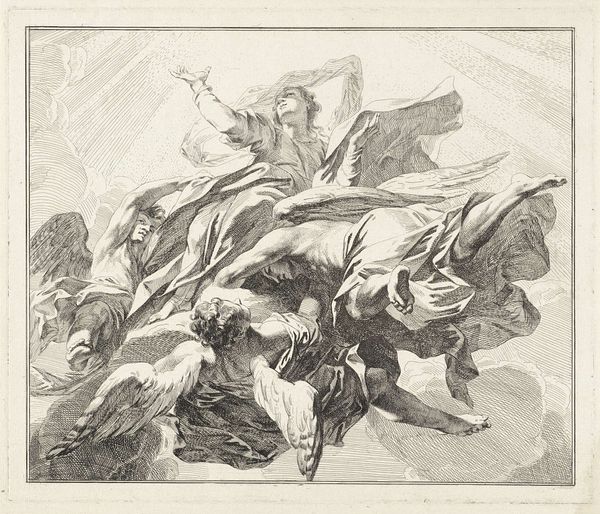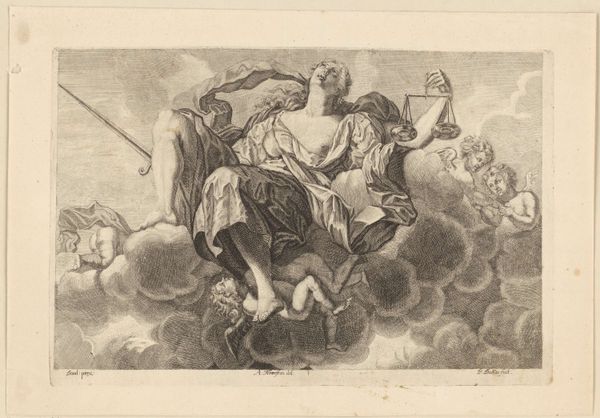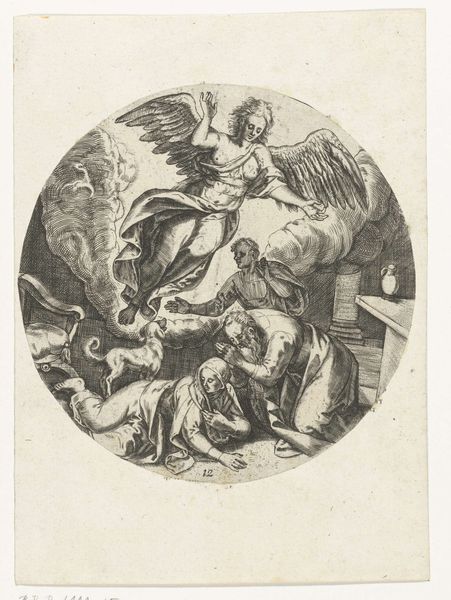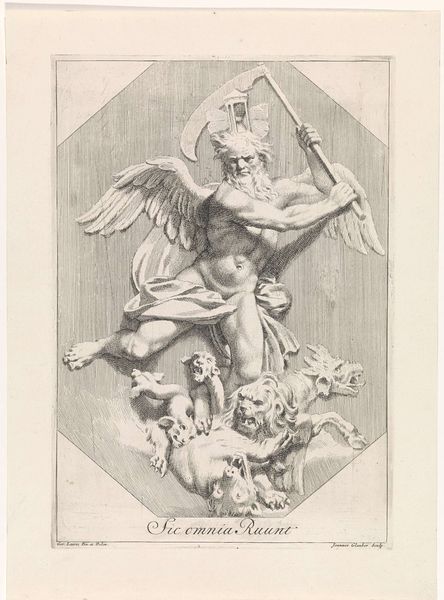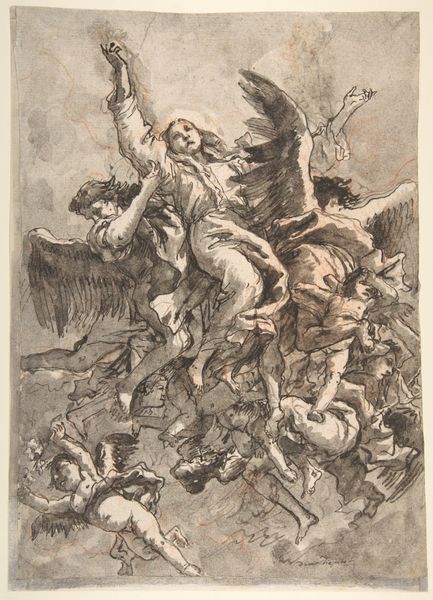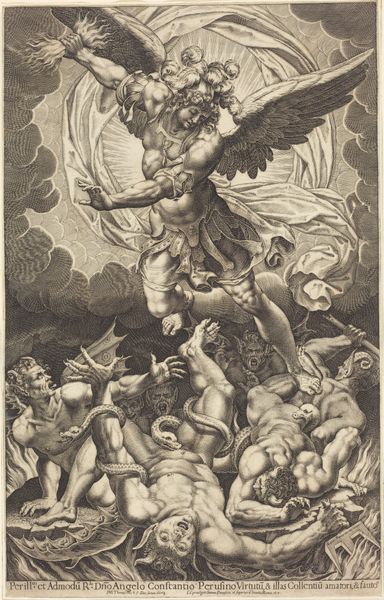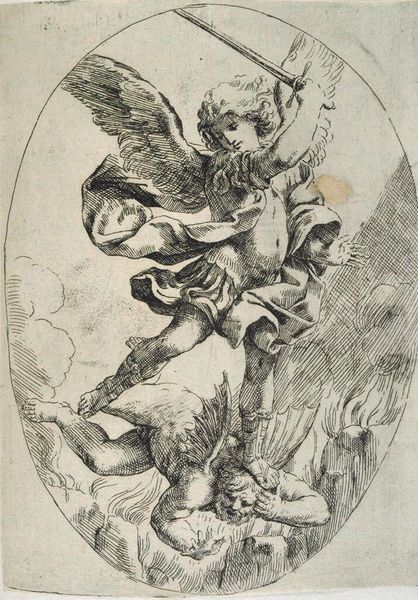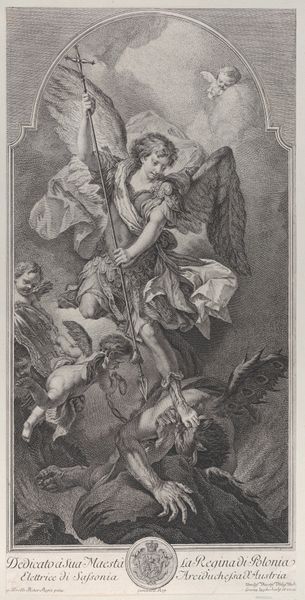
drawing, print, engraving
#
drawing
#
allegory
# print
#
mannerism
#
figuration
#
history-painting
#
engraving
Dimensions: Sheet (lunette/trimmed): 9 1/4 × 18 1/16 in. (23.5 × 45.8 cm)
Copyright: Public Domain
Antonio Fantuzzi made this print, "God Seated on the World," sometime in the 1530s or 40s, using etching. Etching is an indirect process. The artist covers a metal plate with a waxy, acid-resistant ground, then draws an image with a sharp needle to expose the metal. Acid bites into these exposed lines. Ink is then applied, the surface wiped clean, and the ink remaining in the etched lines is transferred to paper through a press. The resulting image is a testament to the artist’s skill and the etcher’s craft. Fantuzzi’s network of lines creates depth and volume, lending the figures weight and presence. Notice the patterns and densities of the lines - they describe the softness of the clouds, and the rippling drapery of the figures. Fantuzzi was among the printmakers who disseminated the designs of the School of Fontainebleau, and this etching testifies to his skill in popularizing the Italianate style. By attending to the material process of etching, we gain a deeper understanding of the image before us, acknowledging the labor and skill involved in its production, and challenging any hierarchy of artistic value.
Comments
No comments
Be the first to comment and join the conversation on the ultimate creative platform.
